Have you ever communicated with a chatbot? If not, then you are missing a huge part of Chatbot technology.
While humans can determine things easily said by another person and know the difference until recently. Computers can now analyze and understand textual data if you're curious. Fascinating, isn't it?
Chatbots, though they have been in the IT world for quite some time, are still a hot topic. 34% of all consumers see chatbots helping in finding human service assistance.
Natural language processing has greatly facilitated our life. 84% of consumers admit to natural language processing at home, and 27% said they use NLP at work.
With the advancement of NLP technology, chatbots have become more sophisticated and capable of engaging in human-like conversations.
This blog will provide you with all the essential information about NLP chatbots and five examples of NLP chatbots. Let's dive in and discover these amazing chatbots!
What is a Chatbot?
A chatbot is a software that simulates human conversation. Chatbots are capable of completing tasks, achieving goals, and delivering results.
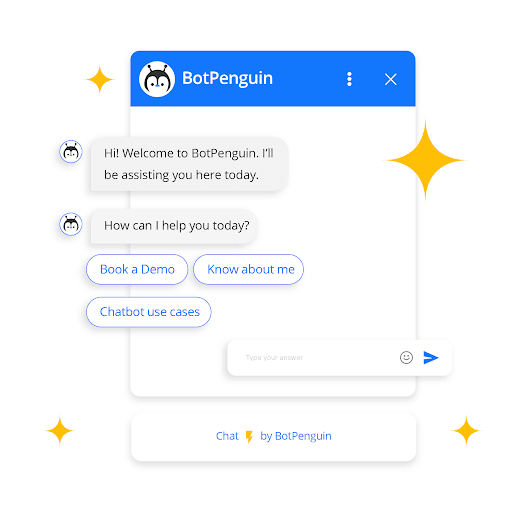
Natural conversations are indistinguishable from human ones using natural language processing and machine learning.
Chatbots use advanced algorithms to understand natural language and respond with contextually appropriate answers.
From customer service to healthcare, chatbots are changing how we interact with technology and making our lives easier.
What is an NLP Chatbot?
NLP or natural language processing facilitates human-to-machine. Communications without humans needing to quote on quote speak Java or any other programming language.
On the one hand, we have the language humans use to communicate with each other, and on the other one, the programming language or the chatbot using NLP.
It is the language created by humans to tell machines what to do so they can understand it. For example, English is a natural language, while Java is a programming one.
How to Build a Chatbot using NLP?
These are steps to keep in mind to building a chatbot using NLP:
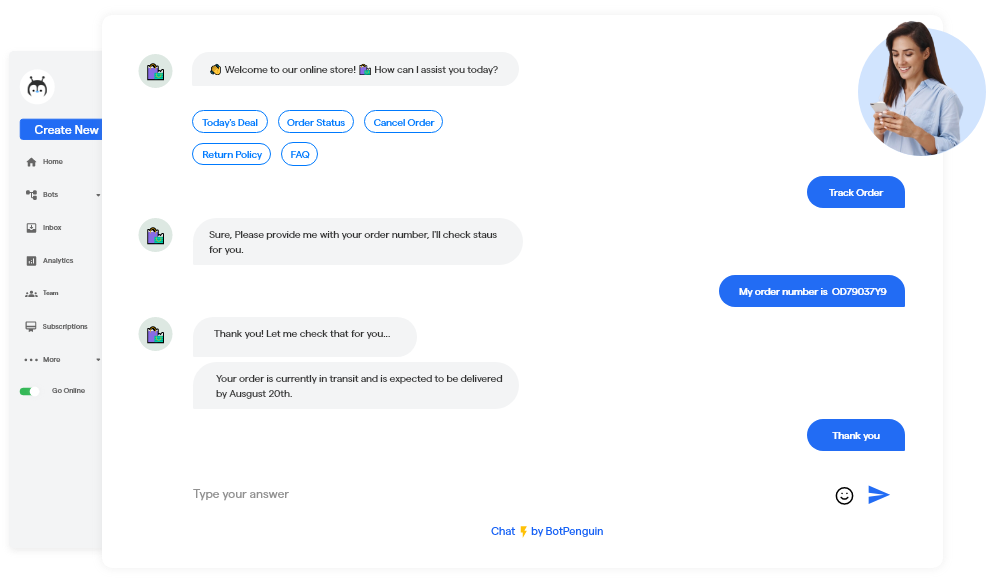
Analyze the Business Logic
The business logic analysis is required to comprehend and understand the clients by the developers' team.
The team must conduct a discovery phase to analyze the business logic, study the competitive market, describe the vital features of your future chatbot, study the competitive market, and then create the business logic of your future product to assess business logic.
Stack of Technologies and Channels
Pick a platform or framework. Various platforms and frameworks are available for constructing chatbots, including BotPenguin, Dialogflow, Botpress, Rasa, and others.
The BotPenguin platform as a base channel is better if you like to create a voice chatbot. On the other hand, telegram, Viber, or hangouts are the proper channels to work with when creating text chatbots.
The following are the most common and prominent technologies concerning the tech stack for chatbot development:
- Python – It is a programming language utilized to create the architecture of your future chatbot.
- Pandas – Data manipulation and analysis software libraries are written for Python.
- Twilio – It provides software developers to programmatically make and receive phone calls, forward and receive text messages, and perform other conversational functions using its web service APIs
- TensorFlow- It is a machine learning and neural networks tasks library often used by many.
- SpaCy – It is an advanced natural language processing library and an open-sourced package.
- Telegram, Viber, or Hangouts APIs – These are used to link up the chatbot to your messengers or websites.
Suggested Reading:
Build A Chatbot & Get It To Talk To You (using NLP)
Integration of NLP and Development
The first two phrases in creating a machine learning chatbot: are the development of a client-side bot and connecting it to the provider's API (Telegram, Viber, Twilio, etc.).
You can add NLP in chatbots by combining artificial intelligence once you are done with the development.
Testing
Test the chatbot with real users and make adjustments based on their feedback. You can utilize manual testing because there are not many scenarios to check.
Testing helps you to determine whether your AI NLP chatbot performs appropriately.
How does NLP Work in a Chatbot?
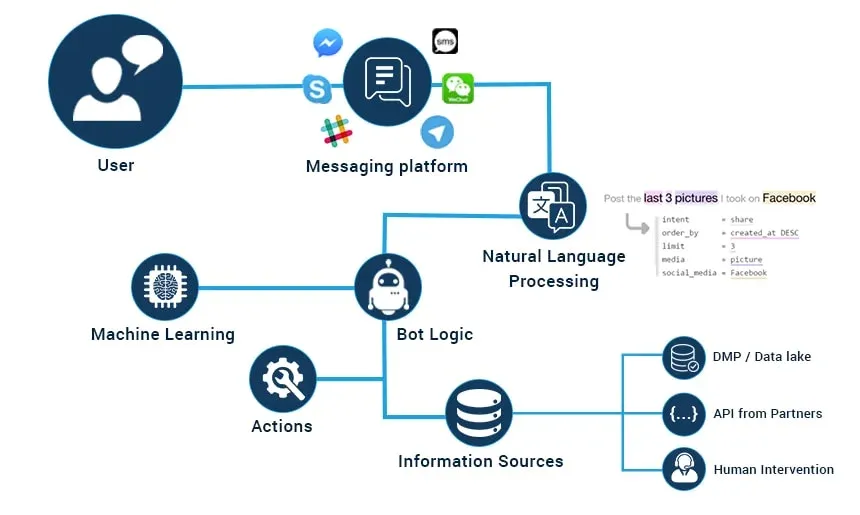
NLP chatbot can be very helpful. Simply asking your clients to type what they want can save them from confusion and frustration.
There is no fixed NLP technique to manage language. To add more layers of information, you must employ various techniques while managing language.
In getting started with NLP, it is vitally necessary to understand several language processing principles.
It follows four steps.
- The structure and relationship of words are determined by morphology.
- The words are used in a syntax manner or order to form sentences.
- With the help of semantic studies, the meaning of words is disclosed by lexical and grammatical structures.
- The simple contextual word meaning is pragmatics.
Mostly, it would help if you first changed the language you want to use so that a computer can understand it. To fill the goal of NLP, syntactic and semantic analysis is used by making it simpler to interpret and clean up a dataset.
5 Best AI Chatbots with NLP
Best AI chatbots with NLP
BotPenguin
BotPenguin is an AI-powered chatbot platform that builds incredible chatbots and uses natural language processing (NLP) to manage automated chats.
It can answer most typical customer questions about return policies, purchase status, cancellation, and shipping fees.
BotPenguin integrates with groove, Jira, Help Scout, time trade, HelpDesk, Zendesk, Salesforce, Zapier, Zoho mail, google Sheets, Facebook, Skype, and many more.
It also has free trials, including various offers in free.
BotPenguin Features:
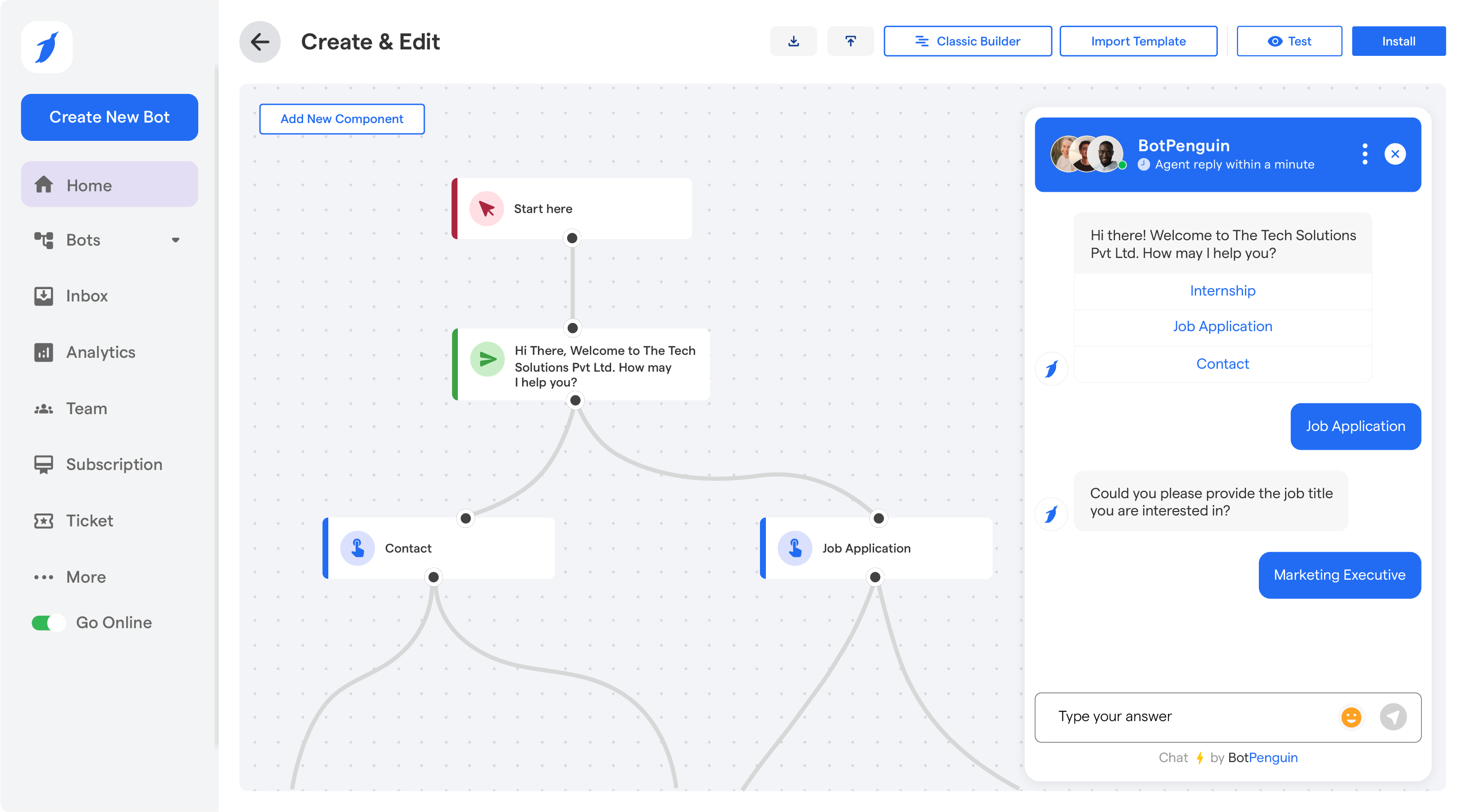
- Natural Language Processing
- Zero Development Time
- Zero Setup Cost
- Conversational UI
- Deep Analytics
- Easy to Integrate
- Cost Effective
- Easily Customizable
- Strong Validation
- Human Handover
- Multiple Messaging Channels
- Branching
- Capable of Being Trained
Haptik
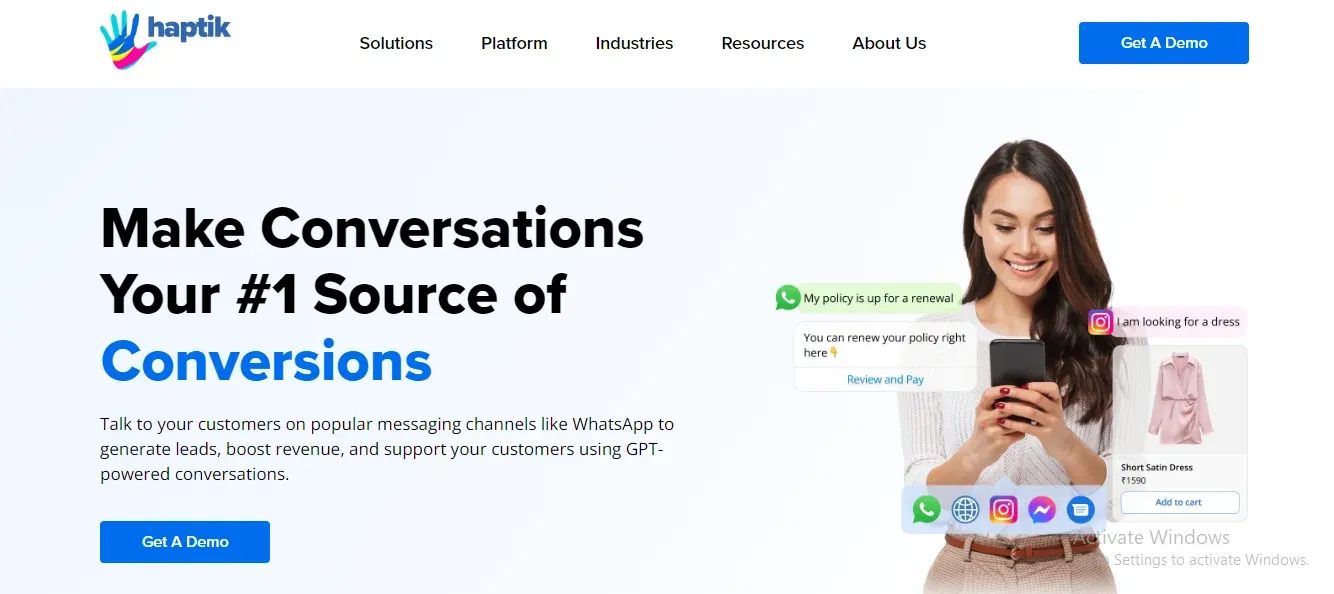
Haptik is an Indian enterprise conversational AI platform for business. Haptik, an NLP chatbot, allows you to digitize the same experience and deploy it across multiple messaging platforms rather than all messaging or social media platforms.
You can design, develop, and maintain chatbots using this powerful tool.
The dashboard will provide you the information on chat analytics and get a gist of chats on it. It integrates with any pre-existing or bespoke CRM system. However, no fixed pricing is available for Haptik.
Haptik features:
- Natural Language Search
- Performance Metrics
- Personalization
- Pre-Configured Bot
- Real-Time Analytics
- Real-Time Data
- Real-Time Monitoring
- Real-Time Notifications
- Reporting & Statistics
- Reporting/Analytics
- Search/Filter
- Sentiment Analysis
- Social Media Integration
- Speech Recognition
- Speech Synthesis
- Surveys & Feedback
- Third-Party Integrations
- Transfers/Routing
Kore.AI

Kore.ai is a market-leading conversational AI and provides an end-to-end, comprehensive AI-powered "no-code" platform. Kore.ai NLP chatbot is an AI-rich simple solution that brings faster, actionable, more human-like communication.
It produces, trains, tests, and evaluates AI and NLP-powered chatbots for use in the major consumer and corporate communications channels.
Kore.ai supports IP phones, wearables, and other speech recognition devices like Amazon's echo. It collaborates with skype, cisco spark, slack, workplace by Microsoft teams, and Facebook.
Kore.Ai Features:
- AI/Machine Learning
- Business Process Automation
- Chatbot
- Code-free Development
- Contextual Guidance
- For Developers
- Intent Recognition
- Live Chat
- Multi-Channel Communication
- Multi-Language
- Natural Language Processing
- Personalization
- Pre-Configured Bot
- Reporting/Analytics
- Sentiment Analysis
Suggested Reading:
Improve Customer Support Efficiency with NLP-based Chatbots
Rasa
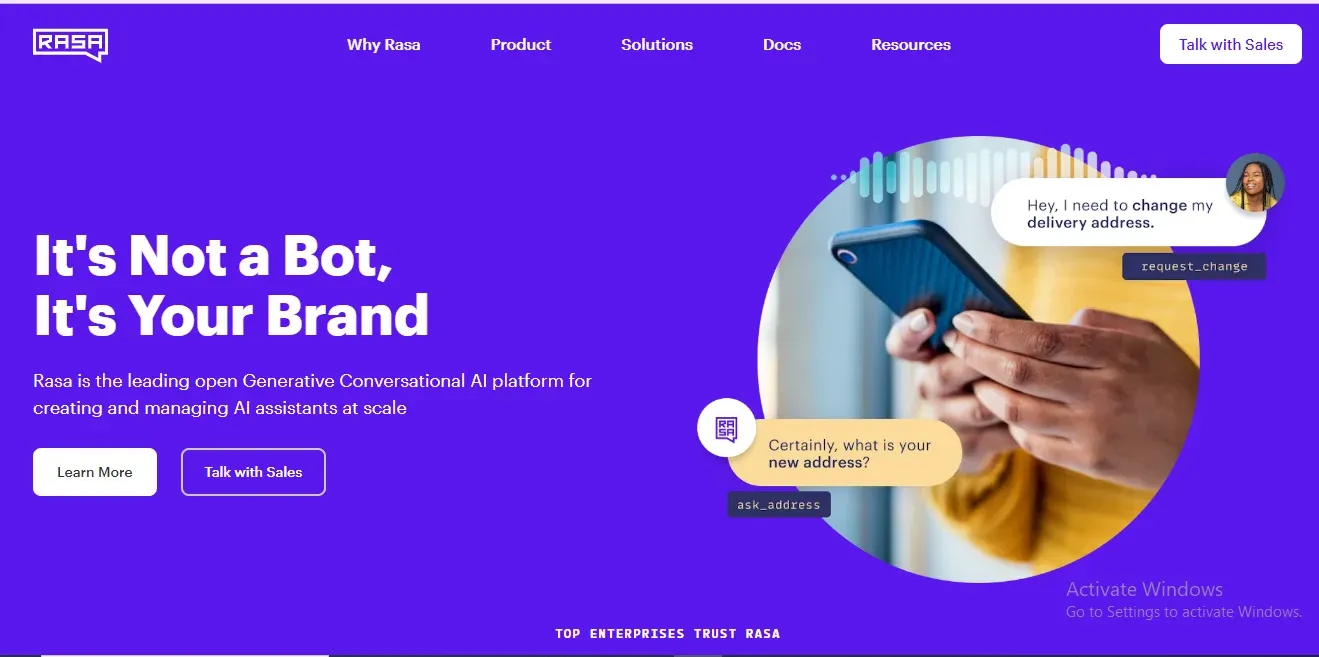
Rasa is the leading conversational AI platform or framework for developing AI-powered, industrial-grade chatbots built for multidisciplinary enterprise teams.
Rasa is used by developers worldwide to create chatbots and contextual assistants.
Rasa is a free and open-source platform that deals with companies trying to boost subscribers' engagement: personalized customization, marketing automation, and customer interaction is assisted by Rasa.
Rasa is compatible with Facebook Messenger and enables you to understand your customers better. You may deploy Rasa onto your server by maintaining the components in-house. Apart from this, it also has versatile options and interacts with people.
Rasa Features:
- AI/Machine Learning
- Contextual Guidance
- For Developers
- Intent Recognition
- Natural Language Processing
- Pre-Configured Bot
- Reporting/Analytics
- Third-Party Integrations
DialogFlow
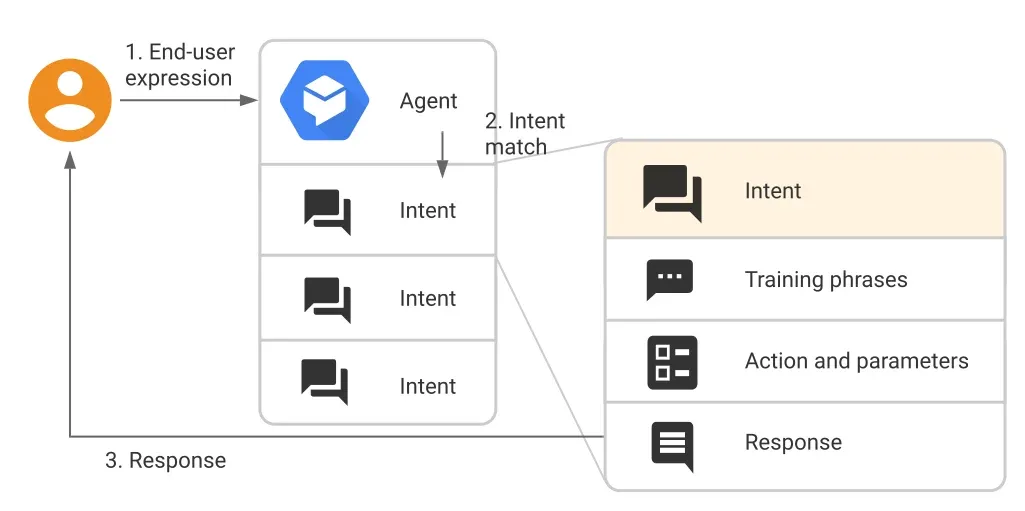
Dialogflow is a natural language understanding platform and a chatbot developer software to engage internet users using artificial intelligence. It is an NLP chatbot to manage automated chats.
Dialogflow offers a free trial without any charges and integrates a conversational user interface into your mobile app, web application, device, bot, or interactive voice response system.
It is easy to design, and Dialogflow uses Cloud speech-to-text for speech recognition. With over 400 million Google Assistant devices, Dialogflow is the most popular tool for creating actions.
Dialogflow Features:
- Multi-Channel Communication
- Multi-Language
- Small Talk
- Multilingual Agent Support
- Cross Platform Support
- Fulfillment
- Training
- Agent Creation & Management
- Entities
- Intents
- Integrations
- In-Line Code Editor
- Analytics
Conclusion
Almost every customer craves simple interactions, whereas every business craves the best chatbot tools to serve the customer experience efficiently.
An AI chatbot is the best way to tackle a maximum number of conversations with round-the-clock engagement and effective results.
This article explored five examples of chatbots that can talk like humans using NLP, including chatbots for language learning, customer service, personal finance, and news. These chatbots demonstrate the power of NLP in creating chatbots that can understand and respond to natural language.
As NLP technology advances, we expect to see even more sophisticated chatbots that can converse with us like humans. The future of chatbots is exciting, and we look forward to seeing the innovative ways they will be used to enhance our lives.
Whether you need a customer support chatbot, a lead generation bot, or an e-commerce assistant, BotPenguin has got you covered. Our chatbot is designed to handle complex interactions and can learn from every conversation to continuously improve its performance.
Ready to take your business to the next level? Try BotPenguin today and see the difference NLP-powered chatbots can make. Sign up now for a free trial and experience the future of customer service!
Frequently Asked Questions (FAQs)
How do you use NLP in Chatbots?
NLP in Chatbots involves programming them to understand and respond to human language.
It employs algorithms to analyze input, extract meaning, and generate contextually appropriate responses, enabling more natural and human-like conversations.
What are the features of an NLP chatbot?
NLP-powered chatbots boast features like sentiment analysis, entity recognition, and intent understanding.
They excel in context retention, allowing for more coherent and human-like conversations. Additionally, these chatbots can adapt to varying linguistic styles, enhancing user engagement.
Is NLP required for a chatbot?
While not mandatory, NLP significantly improves chatbot performance. Without NLP, chatbots may struggle to comprehend user input accurately and provide relevant responses.
Integrating NLP ensures a smoother, more effective interaction, making the chatbot experience more user-friendly and efficient.
Why is NLP good for chatbots?
NLP enhances chatbot capabilities by enabling them to understand and respond to user input in a more natural and contextually aware manner.
It improves user satisfaction, reduces communication barriers, and allows chatbots to handle a broader range of queries, making them indispensable for effective human-like interactions.


